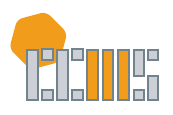Abstract / Synopsis
The low visibility and specialised languages of mathematical work pose challenges for the ethnographic study of communication in mathematics, but observation-based study can offer a real-world grounding to questions about the nature of its methods. This paper uses theoretical ideas from linguistic pragmatics to examine how mutual understandings of diagrams are achieved in the course of conference presentations. Presenters use shared knowledge to train others to interpret diagrams in the ways favoured by the community of experts, directing an audience’s attention so as to develop a shared understanding of a diagram’s features and possible manipulations. In this way, expectations about the intentions of others and appeals to knowledge about the manipulation of objects play a part in the development and communication of concepts in mathematical discourse.
DOI
10.5642/jhummath.201901.09
Recommended Citation
Kate McCallum, "Untangling Knots: Embodied Diagramming Practices in Knot Theory," Journal of Humanistic Mathematics, Volume 9 Issue 1 (January 2019), pages 178-199. DOI: 10.5642/jhummath.201901.09. Available at: https://scholarship.claremont.edu/jhm/vol9/iss1/9
Terms of Use & License Information

This work is licensed under a Creative Commons Attribution-Noncommercial-Share Alike 4.0 License.
